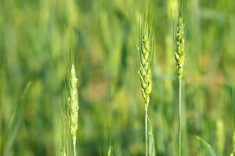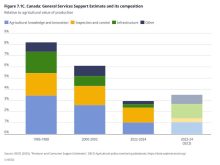Manitoba producers continue to face an uncertain nutrient picture after a slow and wet spring.
High residual nitrogen last fall may have tempted some to limit their spring applications of the suddenly very expensive nutrient, but that could mean they need to do an in-season top-up.
It’s a situation that has agronomists recommending a number of different techniques to spot nutrient deficiencies in crops.
Read Also

Manitoba Ag Days plans star-studded speaker lineup
Dragons’ Den panellist Arlene Dickinson among speaker series highlight for 2026 Manitoba Ag Days in Brandon, alongside slate of agriculture experts.
Recent soil testing shows the expected residual nitrogen from last fall was driven deeper into the soil by spring rains.
“Last fall, there was a big chunk of nitrogen — in many cases 80 to 90 pounds in the top six inches,” said John Heard, soil fertility specialist with Manitoba Agriculture.
“Now, there’s very little in the top six inches; most of it has moved down to six to 24 inch depth. There’s about 20 to 40 pounds less nitrogen in the top two feet.”
The trick for farmers is determining whether their crops are reaching that deep nitrogen so they can determine whether more is needed.
“When we talk about deficiency, we have to think about nutrient mobility in the plant,” says Marla Riekman, soil specialist with Manitoba Agriculture. The problem is that the symptoms of nitrogen deficiency, for instance, the yellowing of the leaves, can look very similar to those of sulphur deficiency. But Reikman notes that while nitrogen is mobile in the plant, sulphur is not.
“We’ll end up seeing old leaf tissue showing nitrogen deficiency,” she said.
Sulphur deficiency looks similar on the leaf, but it will happen in the young tissue. As a result, nitrogen deficiency shows up at the bottom of the plant because the nitrogen is drawn up into the growing point, whereas sulphur won’t reach the top leaves. However, it’s important to keep in mind that nitrogen deficiencies, if they’re bad enough, can cover the entire plant.
In wheat, nitrogen deficiency will appear as yellowing of older leaves, a senescence of the older leaves, a reduction in tillering and, with a severe nitrogen shortage that carries through the season, reduced head size and yield.
Nitrogen deficiencies in corn first become evident, like in wheat, with the yellowing of the lower leaves. However, specific to corn, the yellowing takes place on the inside of the leaf. This is important to note because it could easily be confused with a potassium deficiency, which will show up as yellowing on the outside of the leaf. Reikman offers up a handy mnemonic to remember.
“Nitrogen, second letter ‘i’ for ‘inside,’ and potassium, second letter ‘o’ for ‘outside.’ That’s one key phrase to remember when you’re trying to diagnose nitrogen deficiencies,” she said.
Nitrogen deficiencies in soybeans also show up as pale, yellowing leaves. But because the soybean plant is able to fix most of the nitrogen it needs through its symbiotic relationship with rhizobia bacteria, farmers won’t necessarily be thinking about fertilizing. But, while it’s a little early to be talking about it, in a wet year like this, Riekman says that it’s important to check for proper nodulation.
“You’re looking for nice pink nodules and you’re looking at the number of nodules,” she said.
Identifying a nitrogen deficiency is the first step, but yellowing lower leaves only tells you you’re deficient, not how deficient it is or how much rescue nitrogen is required.
“It’s a little hard to say the exact amount, but we do know that we need to put on more if we’re dealing with high loss conditions,” Riekman said. “If we’re dealing with wet, saturated soils or if we’ve got extra rain, we know we have reduced nitrogen rates.”
Also, growers who drastically reduced rates based on the high residual nitrogen last fall, or farmers who applied nitrogen in the fall, may need to top it up.
As well, if the yield potential is high, then more should be added. Conversely, if farmers applied banded urea, NH3 or UAN; if they used nitrification inhibitors or ESN; or if they delayed planting and expect a lower yield, they will likely need to apply less nitrogen.
















